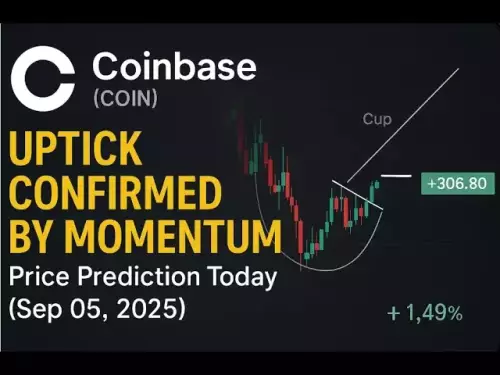-
 Bitcoin
Bitcoin $111100
0.57% -
 Ethereum
Ethereum $4304
-0.23% -
 XRP
XRP $2.835
1.13% -
 Tether USDt
Tether USDt $1.000
0.01% -
 BNB
BNB $850.6
0.46% -
 Solana
Solana $204.3
0.61% -
 USDC
USDC $1.000
0.01% -
 Dogecoin
Dogecoin $0.2184
2.83% -
 TRON
TRON $0.3318
-0.95% -
 Cardano
Cardano $0.8325
2.77% -
 Hyperliquid
Hyperliquid $47.01
3.88% -
 Chainlink
Chainlink $22.35
-0.49% -
 Ethena USDe
Ethena USDe $1.001
-0.02% -
 Bitcoin Cash
Bitcoin Cash $610.4
3.62% -
 Sui
Sui $3.391
3.45% -
 Stellar
Stellar $0.3606
2.56% -
 Avalanche
Avalanche $24.35
-0.25% -
 Hedera
Hedera $0.2197
3.45% -
 Cronos
Cronos $0.2662
0.23% -
 UNUS SED LEO
UNUS SED LEO $9.538
0.34% -
 Litecoin
Litecoin $112.7
1.65% -
 Toncoin
Toncoin $3.086
-0.63% -
 Shiba Inu
Shiba Inu $0.00001241
2.78% -
 Polkadot
Polkadot $3.826
1.36% -
 Uniswap
Uniswap $9.437
1.68% -
 Dai
Dai $0.9999
-0.01% -
 Ethena
Ethena $0.7326
12.45% -
 Monero
Monero $268.6
0.21% -
 Aave
Aave $304.7
-1.16% -
 World Liberty Financial
World Liberty Financial $0.1763
-2.24%
What is a decentralized physical infrastructure network (DePIN)?
DePIN merges blockchain with real-world infrastructure, using token incentives to decentralize and democratize access to services like energy, telecom, and mobility.
Sep 05, 2025 at 07:37 am
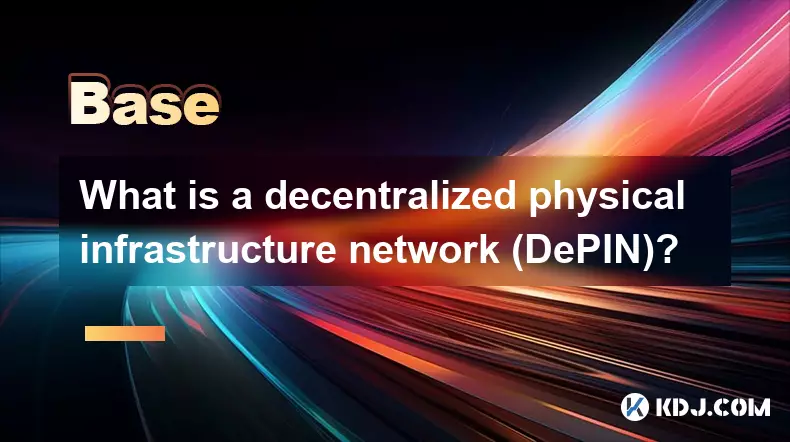
Understanding Decentralized Physical Infrastructure Networks (DePIN)
1. A Decentralized Physical Infrastructure Network, or DePIN, integrates blockchain technology with tangible, real-world infrastructure. Instead of relying on centralized entities to manage services like energy, telecommunications, or transportation, DePIN leverages decentralized networks to coordinate and incentivize participation. This model enables individuals and organizations to contribute physical resources—such as solar panels, wireless routers, or storage units—to a shared network, earning cryptocurrency rewards in return.
2. The core innovation behind DePIN lies in its ability to align economic incentives with infrastructure deployment. By tokenizing contributions, DePIN protocols encourage users to deploy and maintain physical hardware. For example, someone installing a Wi-Fi hotspot in an underserved area can earn tokens based on usage, creating a self-sustaining ecosystem. This mechanism reduces reliance on traditional capital-intensive infrastructure rollouts.
3. DePIN projects often utilize smart contracts to automate reward distribution, ensuring transparency and trustlessness. These contracts verify data such as bandwidth usage, energy output, or sensor readings, then distribute tokens accordingly. This automation reduces administrative overhead and minimizes the potential for fraud or manipulation.
4. The data generated by DePIN devices is frequently stored on decentralized networks, enhancing security and resilience. Unlike centralized databases vulnerable to outages or tampering, distributed storage ensures that infrastructure data remains accessible and unaltered. This is particularly valuable in regions with unstable governance or unreliable service providers.
5. DePIN models are being applied across multiple sectors, including energy, mobility, and environmental monitoring. Projects like Helium for wireless networks or Power Ledger for peer-to-peer energy trading exemplify how blockchain can redefine ownership and access to physical infrastructure. These systems democratize participation, allowing anyone with compatible hardware to join and benefit.
Token Incentives and Network Growth
1. Token economics play a central role in the expansion of DePIN ecosystems. Participants receive native tokens for contributing resources, which can be traded, staked, or used within the network. This creates a direct financial incentive to expand coverage and improve service quality. As more users join, the network becomes more valuable, following Metcalfe’s Law.
2. Early adopters often receive higher rewards to bootstrap the network. This strategy accelerates initial deployment, especially in areas where traditional providers lack interest due to low profitability. The token model turns users into stakeholders, fostering community-driven growth.
3. Some DePIN platforms implement dynamic reward systems that adjust payouts based on demand, location, or time. For instance, a sensor node in a high-traffic urban area may earn more than one in a remote region. This ensures optimal resource allocation and prevents network congestion.
4. Tokens can also be used for governance, allowing holders to vote on protocol upgrades or fund development proposals. This decentralized decision-making process ensures that the network evolves according to community needs rather than corporate mandates.
5. The alignment of token rewards with real-world utility distinguishes DePIN from speculative crypto projects. Value is derived not from hype, but from measurable infrastructure output and user adoption.
Challenges and Security Considerations
1. One major challenge for DePIN is hardware standardization. Without uniform device specifications, interoperability issues can arise, limiting scalability. Projects must establish clear technical guidelines and certification processes to ensure compatibility across the network.
2. Data integrity is critical. Since rewards depend on accurate reporting, malicious actors may attempt to spoof data. DePIN protocols employ cryptographic proofs, reputation systems, and third-party verification to detect and deter fraud.
3. Regulatory uncertainty poses a risk, especially when DePIN services compete with licensed providers. Governments may view decentralized networks as unregulated utilities, leading to legal challenges. Projects must navigate compliance requirements without compromising decentralization.
4. Physical security of devices is another concern. Nodes deployed in public spaces are vulnerable to theft or tampering. Encrypted hardware, remote diagnostics, and insurance mechanisms are being developed to mitigate these risks.
5. Energy consumption of blockchain components must be balanced against sustainability goals. Some DePIN networks are adopting proof-of-stake or off-chain computation to reduce environmental impact while maintaining security.
Frequently Asked Questions
What types of physical infrastructure can be decentralized?DePIN can apply to telecommunications (e.g., mesh networks), energy grids (e.g., solar sharing), transportation (e.g., EV charging networks), and environmental sensing (e.g., air quality monitoring). Any infrastructure that relies on distributed hardware and data collection is a candidate for decentralization.
How do users earn tokens in a DePIN system?Users earn tokens by deploying and maintaining physical devices that contribute to the network. Earnings are typically proportional to the amount of service provided—such as data transmitted, energy supplied, or uptime maintained—and verified through on-chain oracles and smart contracts.
Are DePIN networks secure against hacking?Security depends on the protocol design. Most DePIN networks use cryptographic authentication, decentralized consensus, and data validation layers to protect against attacks. However, like all distributed systems, they must continuously adapt to emerging threats through audits and protocol updates.
Can DePIN replace traditional infrastructure providers?In certain niches, yes. DePIN has already demonstrated success in expanding internet access and enabling peer-to-peer energy trading. While full replacement of large-scale utilities may take time, DePIN offers a scalable, community-driven alternative that complements existing systems.
Disclaimer:info@kdj.com
The information provided is not trading advice. kdj.com does not assume any responsibility for any investments made based on the information provided in this article. Cryptocurrencies are highly volatile and it is highly recommended that you invest with caution after thorough research!
If you believe that the content used on this website infringes your copyright, please contact us immediately (info@kdj.com) and we will delete it promptly.
- Cardano, Pi Network, and Presale Altcoins: What's the Buzz?
- 2025-09-06 04:45:15
- Bitcoin Hashrate, Price, and ATH: Navigating the Crypto Landscape
- 2025-09-06 04:30:12
- Tokens to Watch: Market Cap Projections for 2026
- 2025-09-06 05:05:13
- XRP, Trading Volume, and PayFi Altcoins: What's the Haps?
- 2025-09-06 04:50:12
- Trump Media, Crypto.com, and the Treasury Deal: What's the Deal?
- 2025-09-06 05:05:13
- Crypto's New Darling: Layer Brett and the Meme Coin Upside
- 2025-09-06 05:10:12
Related knowledge
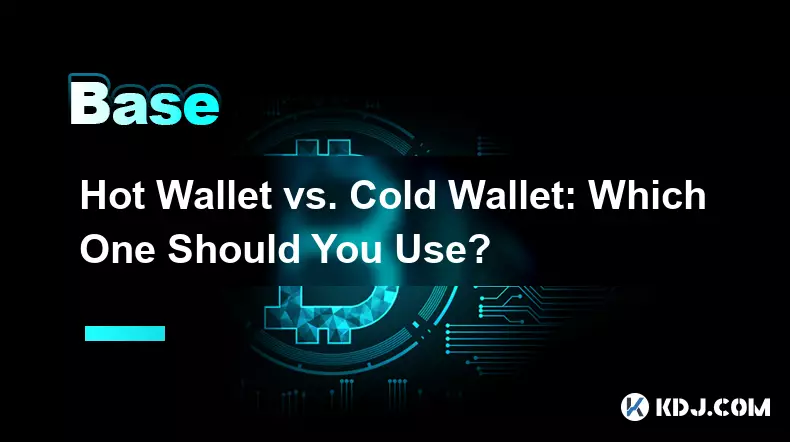
Hot Wallet vs. Cold Wallet: Which One Should You Use?
Sep 05,2025 at 06:19pm
Understanding Hot Wallets in the Cryptocurrency Ecosystem1. A hot wallet is a digital cryptocurrency wallet that remains connected to the internet at ...

What is "backtesting" a crypto trading strategy?
Sep 03,2025 at 10:55am
Understanding Backtesting in Crypto TradingBacktesting is the process of evaluating a trading strategy by applying it to historical market data. Trade...

What is a "crypto trading bot" and do they work?
Sep 02,2025 at 04:19pm
Understanding Crypto Trading Bots1. A crypto trading bot is a software application designed to automate the process of buying and selling cryptocurren...

What is a "copy trading" platform?
Sep 02,2025 at 07:00pm
Understanding Copy Trading in the Cryptocurrency Space1. A copy trading platform allows users to automatically replicate the trades of experienced inv...
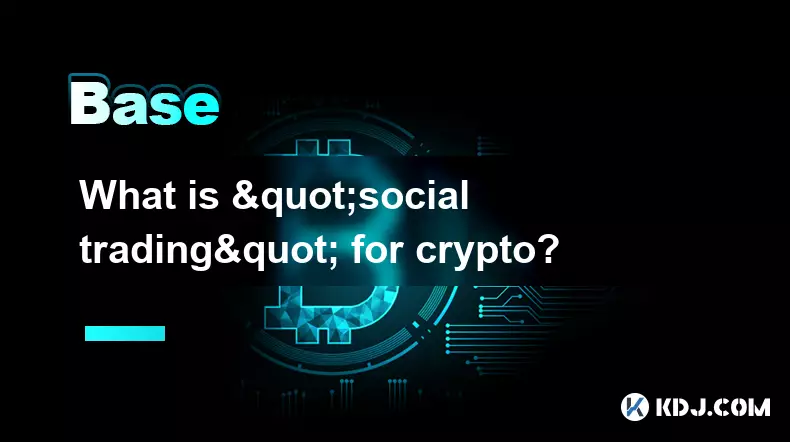
What is "social trading" for crypto?
Sep 03,2025 at 09:00pm
Understanding Social Trading in the Cryptocurrency Space1. Social trading refers to a method where investors observe, follow, and automatically replic...
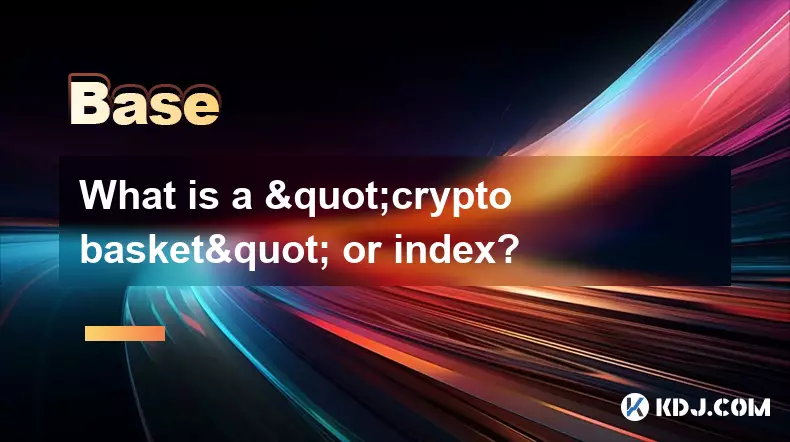
What is a "crypto basket" or index?
Sep 03,2025 at 07:01am
Understanding Crypto Baskets and Their Role in Digital Asset Investment1. A crypto basket refers to a curated collection of multiple cryptocurrencies ...

Hot Wallet vs. Cold Wallet: Which One Should You Use?
Sep 05,2025 at 06:19pm
Understanding Hot Wallets in the Cryptocurrency Ecosystem1. A hot wallet is a digital cryptocurrency wallet that remains connected to the internet at ...

What is "backtesting" a crypto trading strategy?
Sep 03,2025 at 10:55am
Understanding Backtesting in Crypto TradingBacktesting is the process of evaluating a trading strategy by applying it to historical market data. Trade...

What is a "crypto trading bot" and do they work?
Sep 02,2025 at 04:19pm
Understanding Crypto Trading Bots1. A crypto trading bot is a software application designed to automate the process of buying and selling cryptocurren...

What is a "copy trading" platform?
Sep 02,2025 at 07:00pm
Understanding Copy Trading in the Cryptocurrency Space1. A copy trading platform allows users to automatically replicate the trades of experienced inv...

What is "social trading" for crypto?
Sep 03,2025 at 09:00pm
Understanding Social Trading in the Cryptocurrency Space1. Social trading refers to a method where investors observe, follow, and automatically replic...

What is a "crypto basket" or index?
Sep 03,2025 at 07:01am
Understanding Crypto Baskets and Their Role in Digital Asset Investment1. A crypto basket refers to a curated collection of multiple cryptocurrencies ...
See all articles

























